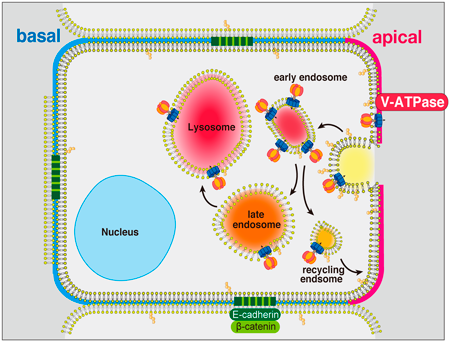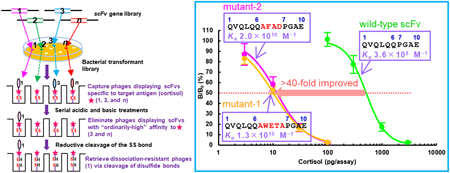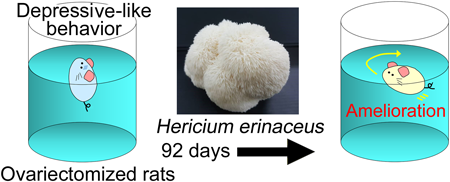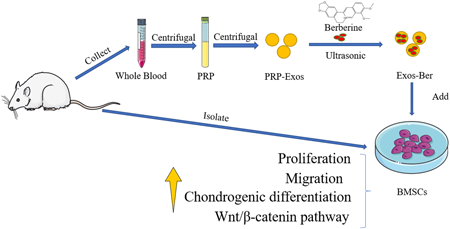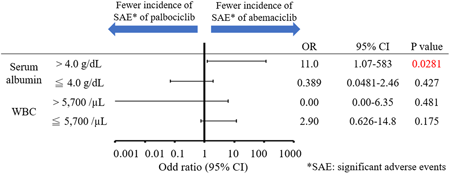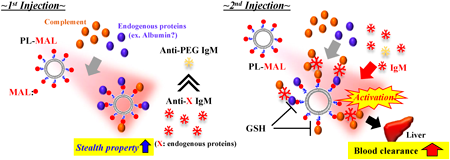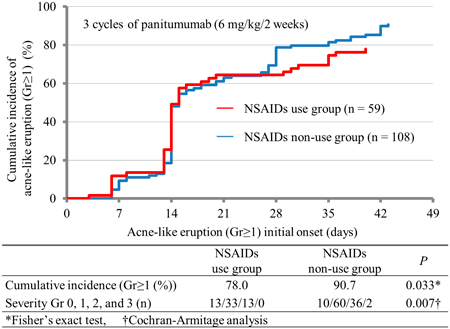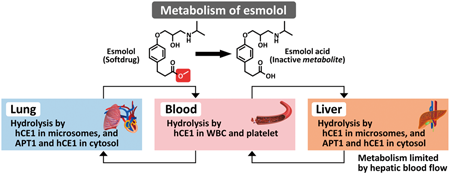- |<
- <
- 1
- >
- >|
-
2022Volume 45Issue 10 Pages 1403
Published: October 01, 2022
Released on J-STAGE: October 01, 2022
Download PDF (178K) Full view HTML
-
2022Volume 45Issue 10 Pages 1404-1411
Published: October 01, 2022
Released on J-STAGE: October 01, 2022
Download PDF (2509K) Full view HTML -
2022Volume 45Issue 10 Pages 1412-1418
Published: October 01, 2022
Released on J-STAGE: October 01, 2022
Download PDF (1441K) Full view HTML -
2022Volume 45Issue 10 Pages 1419-1425
Published: October 01, 2022
Released on J-STAGE: October 01, 2022
Download PDF (827K) Full view HTML -
2022Volume 45Issue 10 Pages 1426-1431
Published: October 01, 2022
Released on J-STAGE: October 01, 2022
Download PDF (3961K) Full view HTML
-
2022Volume 45Issue 10 Pages 1432-1437
Published: October 01, 2022
Released on J-STAGE: October 01, 2022
Download PDF (2174K) Full view HTML
-
2022Volume 45Issue 10 Pages 1438-1443
Published: October 01, 2022
Released on J-STAGE: October 01, 2022
Download PDF (620K) Full view HTML -
2022Volume 45Issue 10 Pages 1444-1451
Published: October 01, 2022
Released on J-STAGE: October 01, 2022
Advance online publication: July 20, 2022Download PDF (6360K) Full view HTML -
2022Volume 45Issue 10 Pages 1452-1457
Published: October 01, 2022
Released on J-STAGE: October 01, 2022
Download PDF (576K) Full view HTML -
2022Volume 45Issue 10 Pages 1458-1465
Published: October 01, 2022
Released on J-STAGE: October 01, 2022
Download PDF (2351K) Full view HTML -
2022Volume 45Issue 10 Pages 1466-1475
Published: October 01, 2022
Released on J-STAGE: October 01, 2022
Download PDF (12544K) Full view HTML -
2022Volume 45Issue 10 Pages 1476-1481
Published: October 01, 2022
Released on J-STAGE: October 01, 2022
Download PDF (503K) Full view HTML -
2022Volume 45Issue 10 Pages 1482-1488
Published: October 01, 2022
Released on J-STAGE: October 01, 2022
Download PDF (397K) Full view HTML -
2022Volume 45Issue 10 Pages 1489-1494
Published: October 01, 2022
Released on J-STAGE: October 01, 2022
Download PDF (376K) Full view HTML -
2022Volume 45Issue 10 Pages 1495-1502
Published: October 01, 2022
Released on J-STAGE: October 01, 2022
Download PDF (939K) Full view HTML -
2022Volume 45Issue 10 Pages 1503-1509
Published: October 01, 2022
Released on J-STAGE: October 01, 2022
Download PDF (1185K) Full view HTML -
2022Volume 45Issue 10 Pages 1510-1517
Published: October 01, 2022
Released on J-STAGE: October 01, 2022
Advance online publication: August 02, 2022Download PDF (3505K) Full view HTML -
 2022Volume 45Issue 10 Pages 1518-1524
2022Volume 45Issue 10 Pages 1518-1524
Published: October 01, 2022
Released on J-STAGE: October 01, 2022
Editor's pickPEGylated liposomes (PL) lose their long-circulating characteristic when administered repeatedly, called the accelerated blood clearance (ABC) phenomenon. A PEG lipid with a maleimide (MAL) group at the PEG terminal, MAL-PEG-DSPE, is used in various studies as a linker for ligand-bound liposomes such as antibody-modified liposomes. However, most ABC phenomenon research used PL with a terminal methoxy group. In this study, authors prepared MAL-PEG-DSPE liposomes (PL-MAL) to evaluate the effect of PL-MAL on the ABC phenomenon induction. These findings indicate PL-MAL induced the ABC phenomenon independent of the production of IgM antibodies against PEG. This study provides valuable findings for further studies using ligand-bound liposomes.
Download PDF (945K) Full view HTML -
2022Volume 45Issue 10 Pages 1525-1530
Published: October 01, 2022
Released on J-STAGE: October 01, 2022
Download PDF (674K) Full view HTML -
 2022Volume 45Issue 10 Pages 1531-1536
2022Volume 45Issue 10 Pages 1531-1536
Published: October 01, 2022
Released on J-STAGE: October 01, 2022
Editor's pickAcne-like eruption caused by anti-epidermal growth factor receptor (EGFR) antibodies such as panitumumab reduces treatment adherence and patient quality of life; an alternative therapy is desired. Although the mechanism underlying acne-like eruption associated with anti-EGFR antibody remains unclear, previous studies have suggested that the inhibition of cyclooxygenase (COX)-2 is effective to acne-like eruption caused by low-molecular-weight EGFR inhibitors such as erlotinib. Authors aimed to investigate whether the concurrent use of oral Non-steroidal Anti-inflammatory Drugs (NSAIDs) and EGFR antibodies and presented preliminary evidence that oral NSAIDs may help prevent acne-like eruptions caused by panitumumab.
Download PDF (591K) Full view HTML -
2022Volume 45Issue 10 Pages 1537-1543
Published: October 01, 2022
Released on J-STAGE: October 01, 2022
Download PDF (2604K) Full view HTML -
 2022Volume 45Issue 10 Pages 1544-1552
2022Volume 45Issue 10 Pages 1544-1552
Published: October 01, 2022
Released on J-STAGE: October 01, 2022
Editor's pickEsmolol, an antedrug, is clinically used for long period due to its rapid onset of action and elimination at a rate greater than cardiac output. The authors found the esterases involved in the hydrolysis of esmolol. Esmolol was hydrolyzed by human carboxylesterase 1 (hCE1) in leukocytes and platelets. The human hepatic clearance limited by hepatic blood flow was obtained by microsomal hydrolysis by hCE1 and cytosolic hydrolysis by acyl protein thioesterase 1 (APT1). The expression of hCE1 and APT1 in human lung might cause the high total clearance of esmolol, which is 3.5-fold greater than cardiac output.
Download PDF (713K) Full view HTML -
2022Volume 45Issue 10 Pages 1553-1558
Published: October 01, 2022
Released on J-STAGE: October 01, 2022
Download PDF (4254K) Full view HTML -
 2022Volume 45Issue 10 Pages 1559-1563
2022Volume 45Issue 10 Pages 1559-1563
Published: October 01, 2022
Released on J-STAGE: October 01, 2022
Editor's pickHayashi Y, et al. have already reported that N-(4-Hydroxyphenyl)-retinamide (4-HPR) inhibits dihydroceramide Δ4-desaturase 1 (DEGS1) enzymatic activity, and suppresses SARS-CoV-2 infection. Here, the authors describe the generation of DEGS1 knockout VeroE6/TMPRSS2 cells and their use to evaluate the infectivity and the effect of 4-HPR on SARS-CoV-2 infection. This study reports that DEGS1 is not involved in SARS-CoV-2 infection, including viral replication and the release of viral progeny. Further investigation is needed to elucidate the exact mechanism underlying the inhibition in SARS-CoV-2 infection by 4-HPR. 4-HPR has been extensively studied for cancer treatment. Therefore, the results of this study, along with accumulated clinical data on the safety of 4-HPR, are potential candidates for the treatment of COVID-19.
Download PDF (612K) Full view HTML -
2022Volume 45Issue 10 Pages 1564-1571
Published: October 01, 2022
Released on J-STAGE: October 01, 2022
Download PDF (3376K) Full view HTML -
 2022Volume 45Issue 10 Pages 1572-1580
2022Volume 45Issue 10 Pages 1572-1580
Published: October 01, 2022
Released on J-STAGE: October 01, 2022
Editor's pickCancer cells secrete large numbers of small extracellular vesicles (sEVs). These vesicles are derived from intraluminal vesicles (ILVs) and contribute to cancer progression by forming the tumor microenvironment. In this study, Mitani et al. demonstrated a novel role for SNAP23 in Src-dependent EV secretion: in Src-transfected cells, SNAP23 translocates to non-rafts and causes cholesterol depletion, resulting in the upregulation of ILV. They also found that pancreatic cancer patients with high SNAP23 expression have a poor prognosis. These findings suggest that the Src-SNAP23-sEV axis contributes to cancer progression.
Download PDF (4672K) Full view HTML
-
2022Volume 45Issue 10 Pages 1581-1584
Published: October 01, 2022
Released on J-STAGE: October 01, 2022
Advance online publication: August 18, 2022Download PDF (1762K) Full view HTML -
2022Volume 45Issue 10 Pages 1585-1589
Published: October 01, 2022
Released on J-STAGE: October 01, 2022
Download PDF (534K) Full view HTML -
2022Volume 45Issue 10 Pages 1590-1595
Published: October 01, 2022
Released on J-STAGE: October 01, 2022
Download PDF (4826K) Full view HTML
- |<
- <
- 1
- >
- >|



